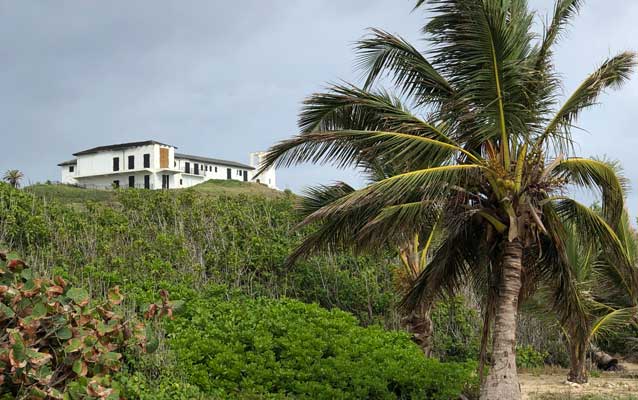Last updated: August 23, 2018
Place
Salt River Bay National Historical Park and Ecological Preserve

NPS Photo
Salt River Bay National Historical Park and Ecological Preserve is on the north coast of the island of St. Croix, U.S. Virgin Islands. St. Croix is the largest of the four islands that comprise the U.S. Virgin Islands, which also include Water Island, St. John, and St. Thomas. The U.S. Virgin Islands are part of the Lesser Antilles and lie on the boundary between the Greater and Lesser Antilles island chain of the Caribbean, making this an important crossroad for the Amerindian and European colonial settlement of the New World. Salt River Bay, a rich and diverse natural estuarine ecosystem, has been the site of human habitation for thousands of years
As both a historical park and ecological preserve, Salt River Bay National Historical Park and Ecological Preserve protects rich archeological evidence representing a mosaic of cultural groups potentially dating as far back as 2,000 years as well as dynamic coastal habitats representative of the diverse ecological setting on St. Croix. Here an upland watershed feeds into a bay fringed with mangrove forests and protected by coral reefs. These unique ecosystems have attracted and been dramatically influenced by human habitation for thousands of years. The park provides a unique opportunity to understand, explore, and appreciate the precolonial and colonial history of the U.S. Virgin Islands and dynamic relationship between the impacts of human settlement and the environment on the island of St. Croix.
Park Purpose
Salt River Bay National Historical Park and Ecological Preserve in St. Croix, U.S. Virgin Islands preserves, protects, studies, and interprets internationally significant historical and cultural sites that encompass more than 2,000 years and human use of the diverse tropical, marine, and terrestrial ecosystems that comprise the Salt River watershed.
Park Significance
- The archeological resources at Salt River Bay National Historical Park and Ecological Preserve span all major periods of human habitation in the U.S. Virgin Islands from the first Amerindian settlements through European contact and colonial periods, generating unparalleled opportunities for scholarly research into the complete history of the Caribbean.
- Salt River Bay National Historical Park and Ecological Preserve protects an Amerindian village and the only known ceremonial stone-lined ballcourt/plaza in the Lesser Antilles providing opportunities for the interpretation of Caribbean life before and after the arrival of European explorers in 1493. · Salt River Bay is a confirmed site where members of Columbus’s second voyage (1493) landed on what is now U.S. territory, resulting in the earliest recorded armed resistance by Amerindians to European colonization.
- Guarding the inlet into Salt River Bay, Fort Salé was first constructed in 1641 and represents one of the earliest and few surviving European earthen fortifications in the New World.
- Salt River Bay National Historical Park and Ecological Preserve contains an estuarine bay that flows into open marine conditions uniquely positioned on the edge of a worldclass submarine canyon that empties into the 3-mile-deep basin, Virgin Islands Trough, to the north of St. Croix.
- From terrestrial uplands to an estuarine bay, along the tropical shoreline, out to the coral reef and into the submarine canyon, Salt River Bay National Historical Park and Ecological Preserve protects a complete ridge-to-reef ecosystem that provides habitat and sustains rare, threatened, and endangered plant and wildlife species on the island of St. Croix.
- The co-management of Salt River Bay National Historical Park and Ecological Preserve is a collaboration among the federal government, the Government of the Virgin Islands, and the wider U.S. Virgin Islands community providing stewardship, research, and understanding of the park’s diverse resources
Learn more about Salt River Bay National HIstorical Park and Ecological Preserve.
